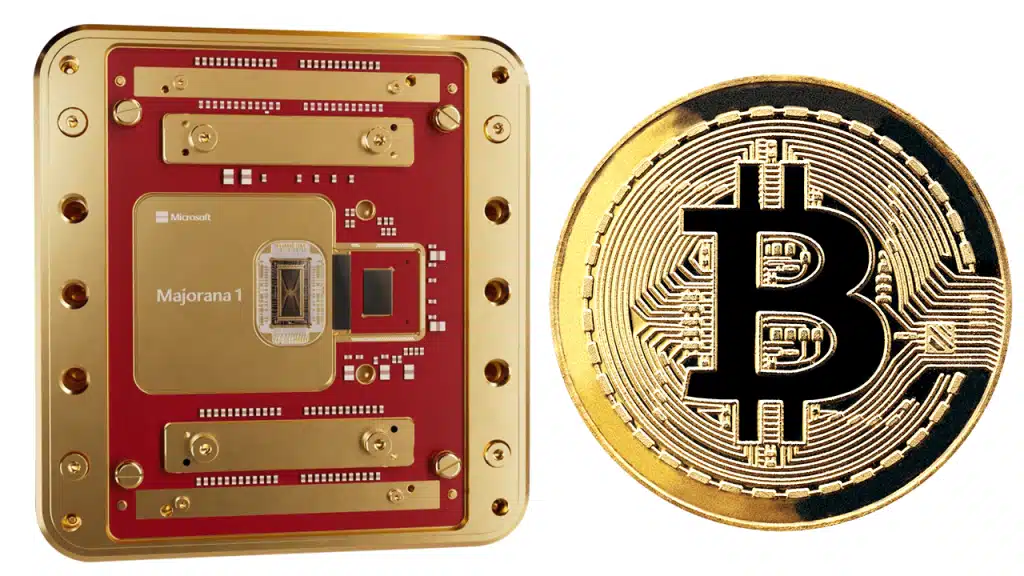- Microsoft’s new quantum chip, Majorana 1, could accelerate the timeline for Bitcoin to adopt quantum-resistant encryption.
- A fully operational 1-million-qubit quantum computer could potentially crack Bitcoin’s private keys, putting millions of BTC at risk.
- Microsoft predicts the 1-million qubit milestone could be reached before 2030, raising concerns about Bitcoin’s long-term security.
Bitcoin’s security could be severely tested by developing quantum computer technology. According to River, an investment company, it’s “crucial” to address the quantum threat early to safeguard the future of the world’s leading cryptocurrency. Microsoft’s latest breakthrough in quantum computing accelerated the timeline for Bitcoin to become quantum-resistant and created fresh concerns in the cryptocurrency world.
1 million qubits can potentially crack a Bitcoin address.
— River (@River) February 20, 2025
Microsoft says its new chip creates a path to get there.
How long does Bitcoin have to become quantum-resistant? And what’s actually at risk?
We break it down in this 🧵 pic.twitter.com/gY2hRJILMu
Earlier this week, Microsoft released the Majorana 1, a revolutionary quantum chip that could alter the world’s computers. The chip employs the theory of topological superconductivity, a new kind of state of matter, to put a million qubits into a piece of silicon. Scaling quantum processing so dramatically could put real-scale, practical quantum applications into the picture while at the same time posing a major threat to Bitcoin’s encryption.
At present, quantum computing doesn’t have real-life applications. However, Microsoft’s advance marks a milestone because the new chip allows quantum computers to run in steady states, ending a long-standing problem in the field. River stated that a fully working one million-qubit quantum computer could solve most problems at the industrial level.
At the same time, such a system could also crack Bitcoin’s private keys, potentially exposing millions of BTC to security threats. If such a machine were deployed and run for several days to weeks, Bitcoin addresses could be compromised through a long-range quantum attack.
Microsoft Predicts 1M Qubits Could Break Bitcoin
Microsoft has predicted that the one-million-qubit milestone will be met by the end of the current decade. If progress continues at the same pace and hundreds of millions of qubits are built, some 5.9 million BTC will be in imminent danger. This could usher in a dramatic paradigm shift in Bitcoin’s security model, pushing the industry to rush the building of quantum-resistant encryption tools.
Adding to the above problems, Google’s latest introduction of the Willow chip kindled other arguments about Bitcoin’s vulnerability. However, other analysts opine that quantum computers still require millions of qubits to make Bitcoin’s encryption useless, making the menace look miles off. However, Microsoft’s latest advance kindled other arguments about the use of post-quantum cryptography in the blockchain industry.
1 million qubits can potentially crack a Bitcoin address.
— River (@River) February 20, 2025
Microsoft says its new chip creates a path to get there.
How long does Bitcoin have to become quantum-resistant? And what’s actually at risk?
We break it down in this 🧵 pic.twitter.com/gY2hRJILMu
With quantum tech advancing at a lightning pace, the challenge of protecting Bitcoin and blockchain networks intensifies daily. Crypto devs and scientists are under pressure to develop quantum-resistant cryptography before the clock strikes. As the world gets ready to adapt to the post-quantum world, the security of digital assets from future threats will be the challenge of the decade.
Related | How Ethereum’s Open Intents Framework Enhances Cross-Chain Connectivity
How would you rate your experience?






